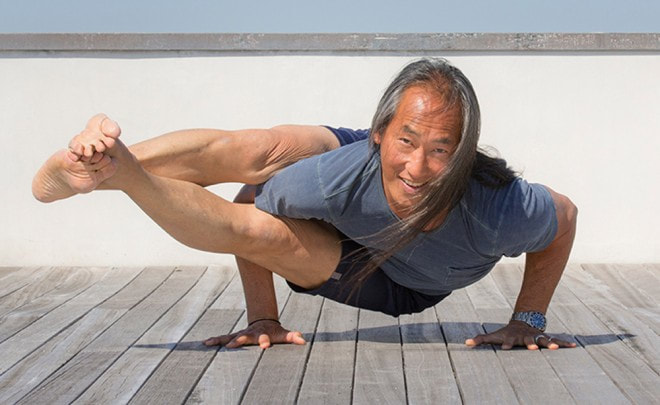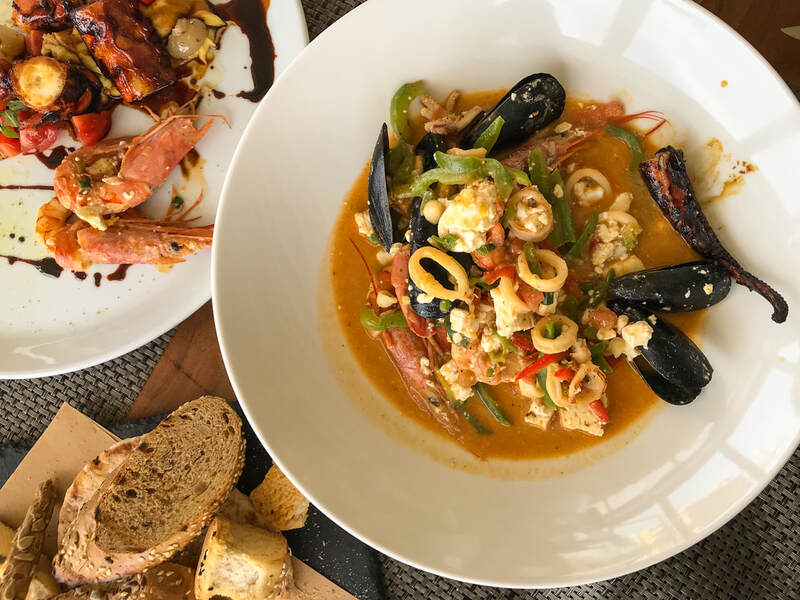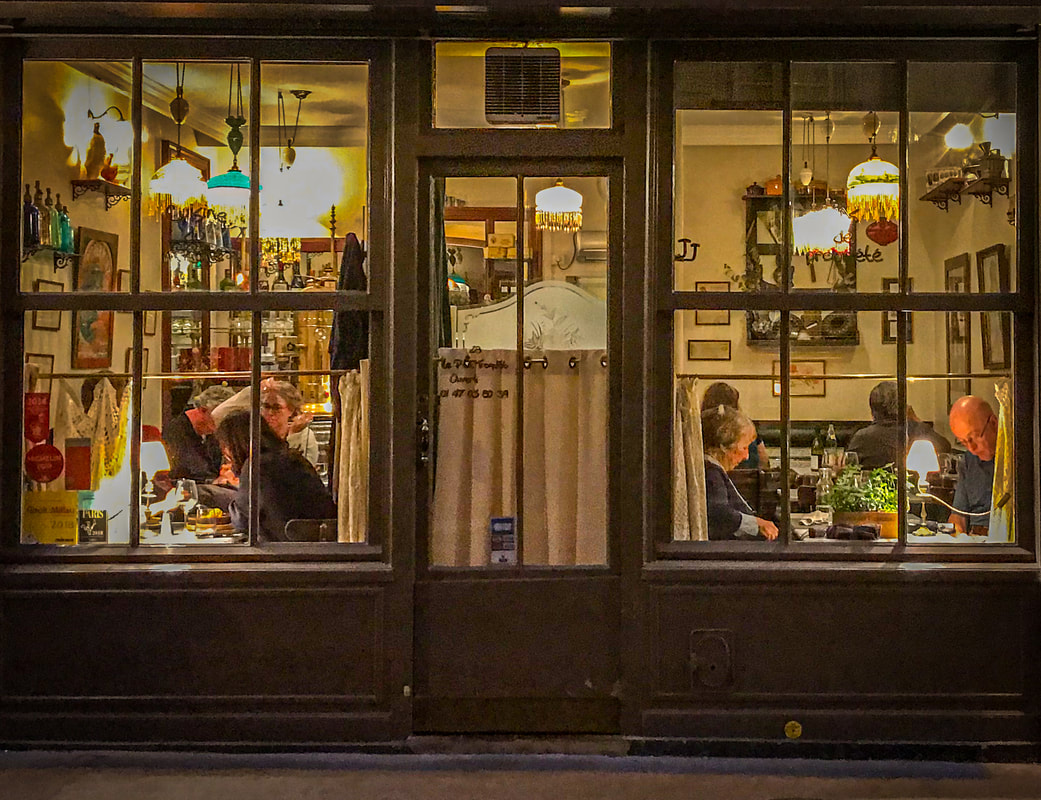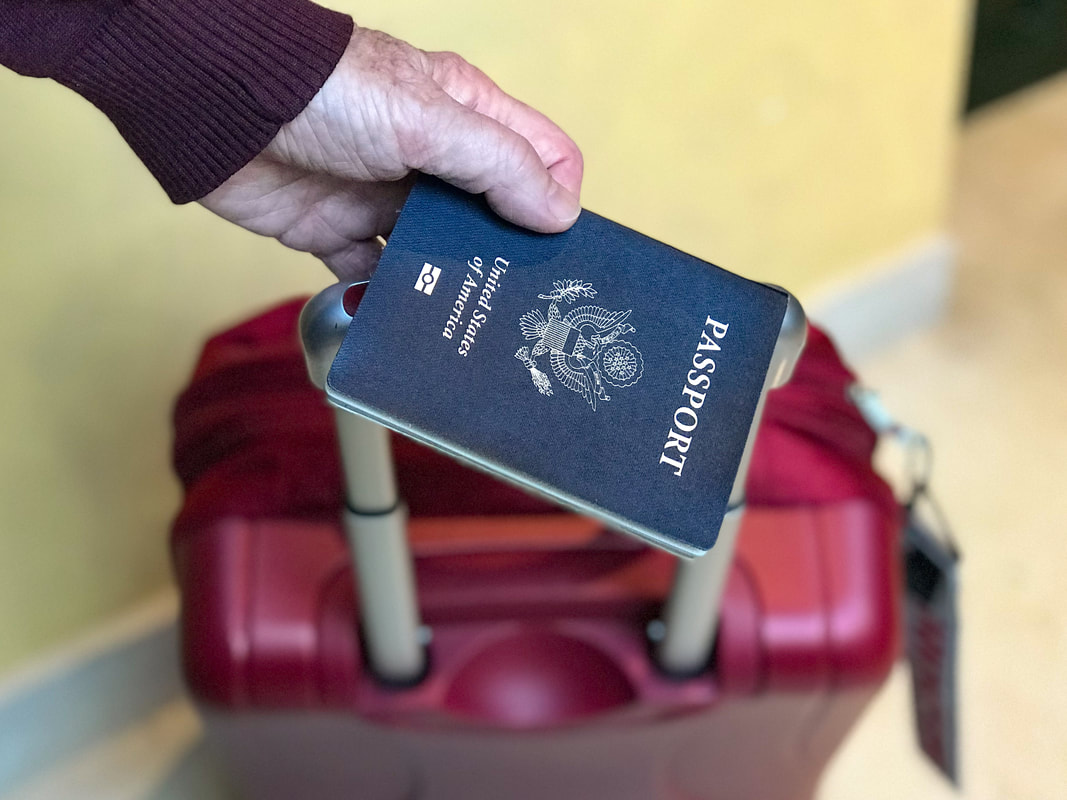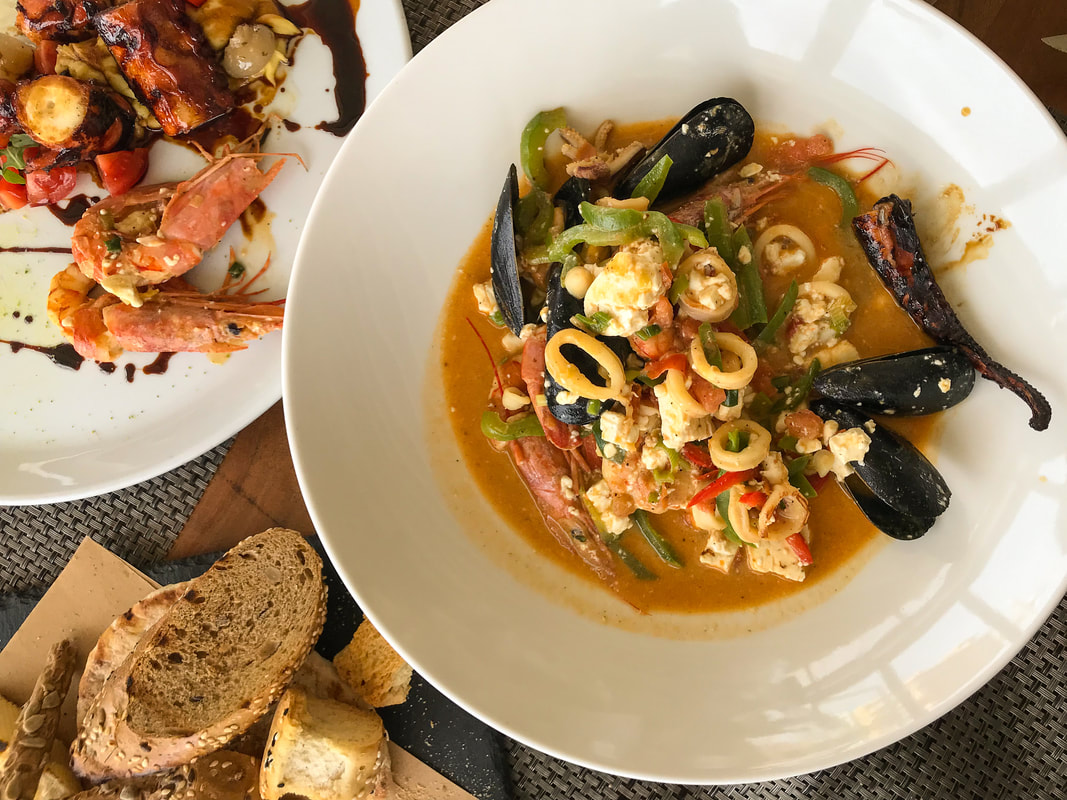|
As a blogger, I occasionally keep tabs on my posts by glancing at the metrics provided by Google and my website builder. But for a really accurate reading, I’ve learned it pays to tally my spam. Like most people, I started small. Five years ago, the odd post would receive a random comment such as: “Your post is very insightful. To make your day even better, buy Viagra here!” Then a couple of years ago, my spammers became fixated on one particular post: Yoga for Travelers, published on May 12, 2016. First it was a comment or two every month, then every week, and recently it’s soared to several a day, sharing offers for medical marijuana and heavy industrial equipment (preferably not to be used at the same time). I’m getting exhausted just tapping the “Spam - Delete” button. I will say the comments are getting livelier. Last week I got this from Kajal Das in Bollywood: “Flames Web Series is an oh so sweet story that manages to reach that quiet place lurking within our hearts, even in the cacophony of today’s times. It’s that all encompassing feeling that sweeps us off our feet as we watch the story unfold on screen. And as Rajat and Ishita slowly get drawn towards each other, we find ourselves drawn into the story, until we’re totally into it, hook, line and sinker ! We start rooting for this syrupy love story, wishing with all our hearts for the misunderstandings between Rajat and Ishita to clear up, and for them to get back together.” Will Rajat and Ishita finally clear up their misunderstandings and find true love? If so, they’re going to have to do it without the assistance of my original Yoga for Travelers. I’ll soon be removing that particular post altogether, in hopes of freeing up my schedule from the boring chore of endless spam deletion. Besides, I have plenty of new thoughts to share on the subject. I’ve been doing yoga a long time — off and on since I was a senior in high school; that's when I signed up for an optional yoga class because I thought it would be hipper than doing actual athletics during the period assigned to PE (physical exercise). Since then, I’ve come to appreciate other benefits besides the coolness factor. The older I get, the more I rely on yoga to keep me strong and flexible and, when I’m on the road, to offset the effects of long bus rides, hard mattresses, and suitcases that require constant hoisting and hauling. Travel may keep our synapses young, but it can take a toll on our bodies, and Rich and I decided from the outset that during our Mediterranean Comfort Food Tour we would work to minimize our aches and pains by spending regular time on the mat. And when I say “on the mat” I am, of course, speaking metaphorically. One of the challenges of doing yoga on the road is that I don’t carry a mat with me. Yes, I know there are folding mats available, but as a minimalist packer, I don’t have even that modest amount of space and weight to spare. Instead, when I’m on the road, my yoga practice takes place on whatever rugs and/or towels I can find in our lodgings, and when confronted with an impossibly hard or grubby floor, I stick with standing postures and avoid floor work altogether. When I'm away from my regular classes, I practice with yoga videos. Maybe it’s a total lack of willpower on my part, but I find it’s a lot easier to keep going when someone is telling me what to do, how to do it, and why it’s helping. There are, at last count, some 549 million yoga videos online; as you can imagine, quality varies wildly. Yoga with Adriene is one of my favorites; she’s got an engaging personality, a dog that wanders on screen from time to time, and more than 500 videos ranging from a few minutes to an hour. On my recent trip, when confronted with dubious floors I often used her Hands-Free Yoga Workout for standing stretches. But that’s just 15 minutes long, and I usually prefer half an hour, so I also practiced with Maris Aylward’s 30 Minute Wrist Free Hands Free Yoga Flow. To mix things up, I selected other teachers’ videos more or less at random. Of course, yoga isn’t the only way to keep fit on the road. Rich calculates that we walked 735 miles on the trip, and personally, I think we should get extra points for all the crazy staircases we climbed, especially when dragging our bags up with us. Thanks to the walking, the stairs, and our yoga pracitce, we managed to eat our way through ten countries without gaining any weight at all. Swimming wasn't part of the program on this trip, but Rich likes to research public pools around the world via SwimmersGuide.com so he can keep up with his laps when circumstances permit. For those who like to work out with weights and machines, there’s been some buzz lately about the free smartphone app Zeamo that helps you find gyms anywhere; I haven't tried it, so if you do, let me know how well it works. Unfortunately the yoga world hasn’t yet organized itself properly with worldwide apps or websites, so your best bet is still good old Google. According to the International Yoga Federation, there are 300 million people worldwide practicing yoga, so there’s a pretty good chance you’ll be able to find a studio just about anywhere you go. Apparently the abundance of yoga practitioners creates an irresistible target for the world’s spammers. And no doubt before long they will notice this post and begin sending me comments about miracle weight loss pills and cheap hair transplants. But there may be some redeeming moments, too. Now that Bollywood has come out with season two of Flames, we can all look forward to finding out if Rajat and Ishita have finally managed to patch up their differences, realize they’re in love, and locate a really great yoga class in a studio near them. Stay tuned for updates. YOU MIGHT ALSO ENJOY Don't miss a single loony adventure, travel tip, video, or recipe.
Send me your email and I'll keep you updated.
12 Comments
“So I need to come up with a topic for this week’s post,” I said to Rich, as I pushed open the door to a cerveceria (beer house) on the outskirts of Seville. The usual Sunday lunch crowd was gathering: parents with adult kids and grandchildren, long-married couples, a cluster of single men in the corner by the TV, watching the game. The chef’s wife shouted a welcome over the hubbub, and we called back greetings as we threaded our way to one of the plain wooden tables at the back. The waiter hurried over with a white paper tablecloth, and Rich picked up the napkin dispenser while I lifted the menus. After putting the table in order, our waiter leaned forward confidentially, flipped open one of menus, and pointed to the words pollo al campo. “The country chicken is really good today,” he said, as he always did. “From our place in the country. Delicious. Also the wild boar.” When the waiter left to fetch our drinks, Rich and I considered our options and agreed, as we usually did, that the pollo al campo really was too delicious to pass up. I began again, “So about this week’s post…” A great shout went up from the futbol corner as someone — judging by the joy, someone on the home team — scored a goal. Behind us, a chair fell over with a crash, and a small boy hurried past, trying to look innocent. Our waiter returned with ice cold beers, a bowl of olives, and a basket of bread. I gave up any attempt at conversation and just sat back to enjoy the atmosphere that locals call Sevilla profunda (profound Seville). There is something wonderful about a solidly unpretentious eatery, with serviceable furniture, regular customers, and nothing that even pretends to be “décor.” In a place like this, you can relax knowing you’ll find the same hearty, delicious dishes that have been satisfying locals for generations. You need never worry that the chef will suddenly become inspired to force-feed his neighbors the kind of small-portioned, trendy fare that comes from studying molecular gastronomy in Paris. Don’t get me wrong; I love and respect Parisian cuisine. And it continues to set an ever-higher bar for world gastronomy, offering breathtakingly original versions of beef curry udon, deconstructed paella, and amusingly reimagined Mexican enchiladas. But visiting the City of Lights last month, I kept feeling something was missing. Finally one night, while sipping excellent sangria in a trendy boîte with a carefully cultivated dive bar theme, I figured it out. “Every meal has been great,” I said to Rich. “But where’s all the French food?” The answer is: disappearing fast. Having watched this phenomena take place in Seville, I shouldn’t have been surprised to encounter it in Paris as well. It’s called culinary displacement, and it’s what happens when trendy new eateries burst on the scene, followed by thinly disguised corporate chains with low-priced pizza and hamburgers; the glut of options leaves traditional restaurants marginalized if not outright defunct. Lucky for me, Sevillanos have a long history of stubbornly clinging to their traditions, so there will always be classic neighborhood cervezerias around, although they’re getting harder to find in the tourist-filled city center. In Paris, according to food writer Alexander Lobrano, the situation is more dire. “Today, rather than being the ballast of the Paris restaurant landscape, ‘real’ bistros are now marketed as nostalgic curiosities where you often pay a steep price for the privilege of eating ‘real’ French food.” Mon Dieu, say it ain’t so! The disappearance of bistros is appalling news for travelers — not only because we’re losing the opportunity to enjoy coq au vin and bœuf bourguignon in their native habitat, but because we'll have fewer opportunities to connect with what it means to be French. Part of the fun of visiting foreign lands is immersing yourself in the atmosphere, enjoying the spectacle of everyday life playing out in a way that’s profoundly characteristic of that particular place. It offers us illuminating glimpses of their culture and often teaches us something about our own. That’s not going to be happening so often in Paris these days, but I can assure you that large swaths of Europe remain untouched by culinary displacement. In Dijon, for instance, restaurant hours are as inflexible as Old Testament commandments. Stay open past 1:30 for lunch? Are you mad? The fact that hungry tourists are standing at the door waving fistfuls of euros doesn’t make anyone budge by so much as a nanosecond. Is this attitude annoying? Intensely. But it’s also very, very French. Americans and les Français have long lived in a state of mutual incomprehension. “In Paris,” said Mark Twain, “they simply stared when I spoke to them in French; I never did succeed in making those idiots understand their own language.” Is Paris a better place now, when we’ve convinced it to bow to economic necessity and offer us food we recognize, menus in English, and opening hours that suit our schedule? Spain is under considerable pressure to adapt to standard hours set by the European Union, and many northern cities have dispensed with the long mid-day break that allows time for lunch at home followed by a siesta, with work lasting later in the evening to compensate. Seville is stubbornly refusing to change, at least for now. Most businesses and shops still close for three hours at lunchtime and all day on Sunday, giving families and friends time to gather at home or meet up in neighborhood places like our favorite cerveceria. When our pollo al campo emerged from the oven, the chef himself carried it to our table and carved the bird for us. It was a true country chicken, sturdy rather than artificially plump, the dark meat a deep brown color, the skin glistening and crisp. It was served in an old-fashioned black pan, atop a mound of fried potatoes, the whole thing swimming in a sauce of chicken fat, wine, and salt. No doubt it was served in precisely the same way in the chef’s grandmother’s time. Rich raised his glass. “To Sevilla profunda,” he said. “About that topic for this week’s post,” I said. “I think I have an idea.” YOU MIGHT ALSO ENJOY Keep in touch by signing up for my mailing list!
Don't miss a single loony adventure or mouthwatering recipe. Of all the phrases you don’t want to utter, “Wait, stop, I didn’t get my passport back!” is fairly high on the list. Not quite up there with “OK, I’ll throw myself on the grenade” but well above “The next round’s on me.” The realization that this essential travel document has disappeared is especially unwelcome when you’re jammed in a sweltering bus in the no-man’s-land between the border-control stations of Albania and Montenegro, and you’re fairly sure the guy who collected the passports doesn’t speak English. Selfishly, I could rejoice in the fact that the missing passport wasn’t mine or Rich’s, but I couldn’t help worrying for the young Dutch student who’d lost it. We’d been chatting with him and his girlfriend since our departure from Shkodër, Albania, swapping travel tales, learning about their studies in Amsterdam, explaining we were currently halfway through our Mediterranean Comfort Food Tour. As on other border crossings in the Balkans, the bus attendant collected all the passports and disappeared into the guard station while we waited on the bus. He eventually reappeared, handing the stack to the nearest passenger, who was supposed extract their own and pass the others along. As the Dutch couple, Rich, and I were sitting in the very back row, I was only too aware this provided ample opportunity for anyone on the bus to thumb through our personal travel information and/or pocket one of our passports. When the last of the passports had been claimed and our seatmate’s wasn’t anywhere to be found, he alerted the bus attendant in a voice that was surprising free from hysteria and calmly ambled forward to sort out the problem. His insouciance became all the more remarkable when I learned later, after the passport had been found in the Albanian border station, that this would have been the third time he’d lost one. He told us that according to Dutch law, three lost passports means you won’t be issued another for five years — a life-changing possibility that he just shrugged off with a grin. “Didn’t happen. Why should I worry?” “This is what I love about traveling with young people,” Rich said as we waved goodbye to the Dutch couple in Podgorica. “They’re so adaptable.” Over dinner that night he returned to the subject. “You know, when you get older, you don’t always think as fast, so it’s natural to try and make your life as predictable as possible. You want to control everything around you. And you can’t. In fact, you can’t really control much of anything. The Buddhists know that, and so do most young people. Somehow we forget that truth as we age.” The subject of age came up a lot during the five months of our Mediterranean Comfort Food Tour. Six weeks into the trip Rich turned 75, and my 68th birthday came around the day after we returned home to Seville. We’ve finally accepted the fact we’re no longer spring or even summer chickens; we’re winter chickens. It’s a sobering thought, and one that seems easier to accept gracefully when we’re on the road. Life has a beautiful simplicity when you’re traveling. The fuss and clamor of everyday activities subsides. You don’t have to worry about going to meetings or fixing that leak in the roof or getting your cholesterol checked. The concerns and projects that propel our days go into hibernation for the duration. “Nothing behind me, everything ahead of me,” wrote Jack Kerouak, “as is ever so on the road.” Of course, journeys bring their own challenges, including the kind of mind-stretching problem-solving exercises that keep our synapses firing. Forget Sudoku and Lumosity. Try figuring out the controls of a Greek washing machine, that streamlined Italian shower, or the Turkish coffee maker. Wrap your brain around the Cyrillic азбука (alphabet) or grapple with the fact your bus to Montenegro is marked Mali i Zi, the Albanian name for that country. Even the relatively simple task of fitting your life into a new Airbnb apartment gives your brain a brisk workout. Every time your brain does these kinds of mental push-ups, it strengthens some of its synapses, those 100 trillion minuscule gaps across which chemical messengers travel, enabling the brain to function. “In the last twenty years,” wrote John B. Arden in Rewire Your Brain, “there has been an overwhelming amount of evidence that the synapses are not hardwired but are changing all the time.” This characteristic, known as neuroplasticity, means that “the brain changes its synapses when you remember something new.” That’s right, you’re boosting your brain power every time you recall how to get from your hotel to that great little bar around the corner and then root around in your memory for clues about whether the local word for beer is birrë, cerveza, or pivo. We don’t have to go out of our way to find mental challenges on the road. Even if the Albanian customs officials don’t manage to misplace our passports, there are endless small hitches, glitches, and hiccoughs to contend with and a constant stream of new information to absorb. The good news is that every time you do remember route details, historical tidbits, or where you left the car keys in the new Airbnb, you can congratulate yourself on making your brain a little stronger and more youthful. My brain will never again be as flexible as those of the twentysomethings from Amsterdam we met on that bus, but my memory … wait, what was I saying? Just kidding. My memory is at its best when I travel, when I think and write about my journeys, and as I plan future trips. I can only assume that’s because I’m doing something right by my 100 trillion synapses. I am counting on them to do right by me in return. YOU MIGHT ALSO ENJOY Don't miss a single loony adventure, travel tip, video, or recipe. Send me your email and I'll keep you updated. As you can imagine, returning home to Seville after five months on the road we’ve been bombarded with questions, including “Are you nuts?” and “Are you two going to stay put for a while?” (The answers are “Yes” and “Yes.”) But the two that always come up first are these:
After five months of gorging ourselves on the best comfort food Europe has to offer, the answer is — drumroll, please — we didn’t gain an ounce. Rich actually lost two pounds. As for me, I can’t provide hard numbers, because after a lifetime of slavishly tracking each tiny gain and loss, some years ago I decided to stop weighing myself altogether. My metric is whether I can button my skinniest jeans, and the answer to that is a definite yes. Why didn’t all that good eating add to our avoirdupois? For one thing, we only ate heartily when we were on the trail of local comfort food; in between, we had salads, fish, and other light fare. We did twenty to thirty minutes of yoga most days. But mainly, we walked a lot. Rich calculates it was somewhere around 735 miles — the equivalent of strolling from New York to Nashville, or (for my European readers) doing the entire Camino de Santiago pilgrimage one and a half times. How did our shoes hold up? Sadly, only one of the two pairs I brought survived the trip. Somewhere in northern Greece, I started noticing feelings of mild dizziness; by the time I got to Albania, these spells were getting more frequent, annoying, and disquieting. Finally I realized the culprit was my comfy old sneakers. The soles were worn so slick they didn’t maintain proper traction on city sidewalks, and I was slipping and sliding a tiny bit with every step. Apparently this upset the equilibrium of my inner ear just enough to create a recurring sensation of dizziness. No, I don’t have a medical professional’s diagnosis to corroborate this. But I can tell you that as soon as I bought a new pair of sneakers the problem cleared up. That’s proof enough for me. My old sneakers weren’t the only things we jettisoned along the way. Rich had a new t-shirt that rubbed irritatingly against his neck, and as the hottest summer in Europe’s history wore on, I parted with two long-sleeved t-shirts to make room for one sundress and then another. As minimalist packers, we follow the rule that buying anything means removing an item of equal bulk and weight from the suitcase. We never throw clothes away; instead, we leave them somewhere they’ll be found — usually sitting on top of a dustbin or bagged and hanging on the back of a restroom door in a train station or dive bar. I like to think these once-beloved possessions are now leading exciting lives with their new humans. My most dramatic discard involved a wardrobe malfunction in Kosovo. As regular readers will recall, Rich and I took a luggage-free side trip to Pristina, the capital of Kosovo. I threw a nightgown and a few necessities into my purse, dressed in comfortable trousers and a fast-drying gauze blouse, and off we went on the overnight journey. We had a fabulous time, sampling mouthwatering Albanian tavë kosi, baked lamb in yogurt sauce, and watching people in tiny storefronts plying such old-school trades as sewing suits, resoling shoes, and repairing vacuum cleaners. That night I hand-washed my blouse and undergarments, and when I dressed the next morning, the bright light streaming in the hotel window made the gauze blouse look nearly translucent. When I remarked on this, Rich said, with true husbandly sympathy, “Nonsense. It’s fine.” Half an hour later, as we strolled the city sidewalks in search coffee, he turned to me and said, “Karen, it’s not fine. In fact, I can see right through your blouse. And so can everyone else.” Yikes! Apparently the repeated washings had proved too much for the delicate gauze, which was disintegrating before my eyes and the eyes of interested passersby. I dashed into the nearest store, where I began a nightmare shopping effort. Having seen hundreds, possibly thousands of attractive shirts in shop windows all through Greece and North Macedonia, those now confronting me were, without exception, hideously unacceptable. I’d have settled for an “I (heart) Kosovo” t-shirt had I found one, but I drew the line at a bare-midriff tank top sporting the “Hello, Kitty” logo. After visiting three or four equally discouraging shops, I finally purchased the ugliest turquoise t-shirt ever manufactured. But as Rich pointed out, at least I no longer risked creating an international incident by getting myself arrested for indecent exposure. As soon as we got back to North Macedonia and I was reunited with my other clothes, the gauze blouse and turquoise t-shirt were given their freedom. Among the other casualties of the trip were my bedroom slippers, which gradually stretched to the point that during the final weeks I was having difficulty keeping them on my feet. Note to self: Comfortably worn footwear might serve well for a few weeks, even a month or two on the road, but it simply can’t stand up to the demands of long-term use. Newer footwear, broken in to the point of comfort but still in its prime, is what I’ll shoot for in the future.  Wearing my Sarajevo sundress in Bologna, Italy Wearing my Sarajevo sundress in Bologna, Italy Which brings me to the question about when we’re going to burn our trip clothes. The answer is: we’re not. In the past, we had “trip clothes” and “regular clothes,” but these days nearly everything we own is travel wear. With the exception of the stretched slippers, now earmarked for a charity shop, all the robust garments we carried home in our suitcases have resumed their rightful place in our everyday collection. Just last night, I went out to dinner in the sundress I bought one sweltering afternoon in Sarajevo, the capital of Bosnia and Herzegovina. The bright flowers on the sturdy fabric will always remind me of that city’s extraordinary beauty and the resilience that sustained its people through desperately tough times. No, I won’t be burning that dress. Nor will I destroy any of the other clothes that served me faithfully during our Mediterranean Comfort Food Tour. They are reminders of grand adventures and have earned a place in my wardrobe. Unless of course, any of them become embarrassingly translucent, and then they’re history. Do you have wardrobe malfunction stories, tips for reliable travel shoes or clothing, or other packing suggestions to share? Please pass them along in the comments below. YOU MIGHT ALSO ENJOY Our Mediterranean Comfort Food Tour 161 Days on the Road Distance traveled: 5,234 miles / 8,423 kilometers Countries visited: 10 Great meals: countless Weight gained: none Our current location: Home in Seville, Spain Thanks for joining us on the journey.
|
This blog is a promotion-free zone.
As my regular readers know, I never get free or discounted goods or services for mentioning anything on this blog (or anywhere else). I only write about things I find interesting and/or useful. I'm an American travel writer living in California and Seville, Spain. I travel the world seeking eccentric people, quirky places, and outrageously delicious food so I can have the fun of writing about them here.
My current project is OUT TO LUNCH IN SAN FRANCISCO. Don't miss out! SIGN UP HERE to be notified when I publish new posts. Planning a trip?
Use the search box below to find out about other places I've written about. Winner of the 2023 Firebird Book Award for Travel
#1 Amazon Bestseller in Tourist Destinations, Travel Tips, Gastronomy Essays, and Senior Travel
BLOG ARCHIVES
July 2024
CATEGORIES
All
|




